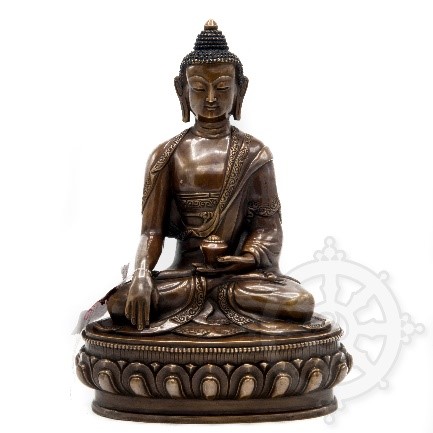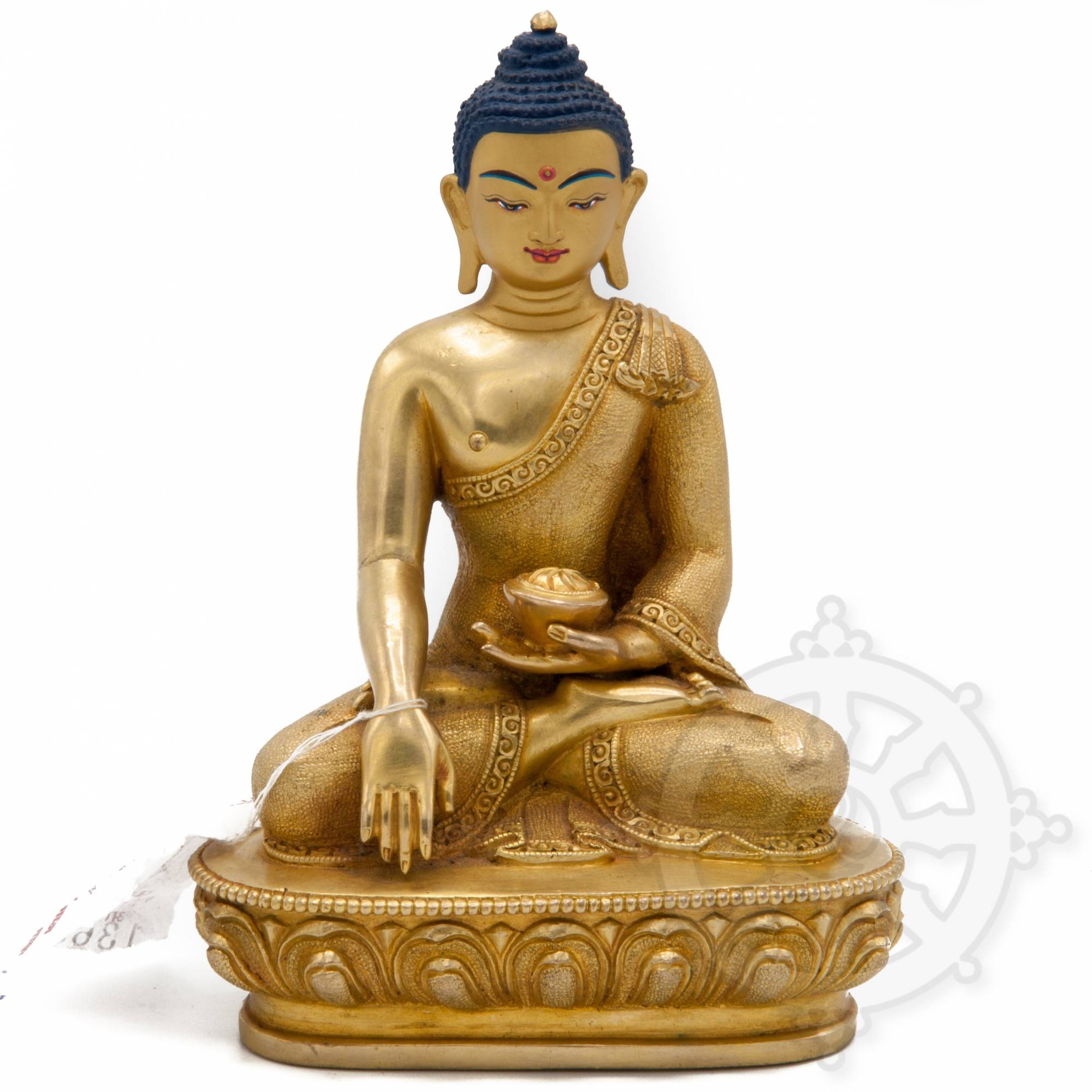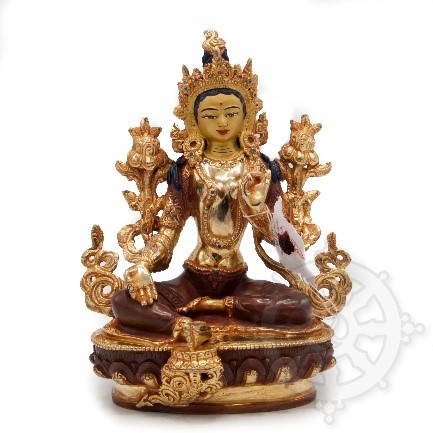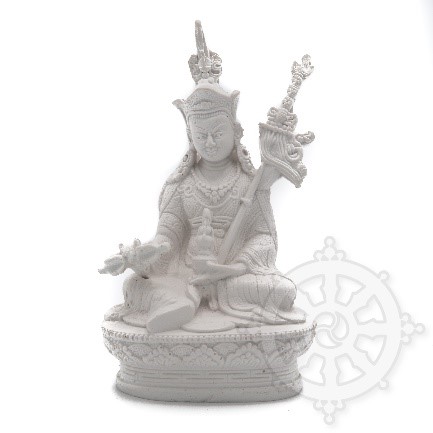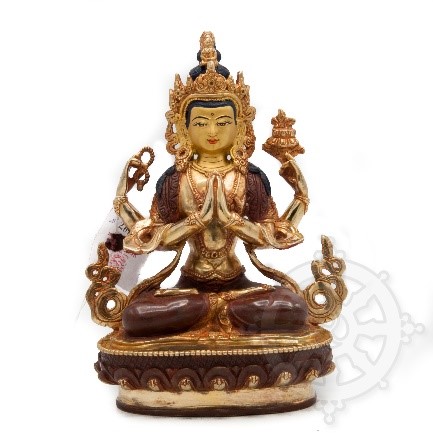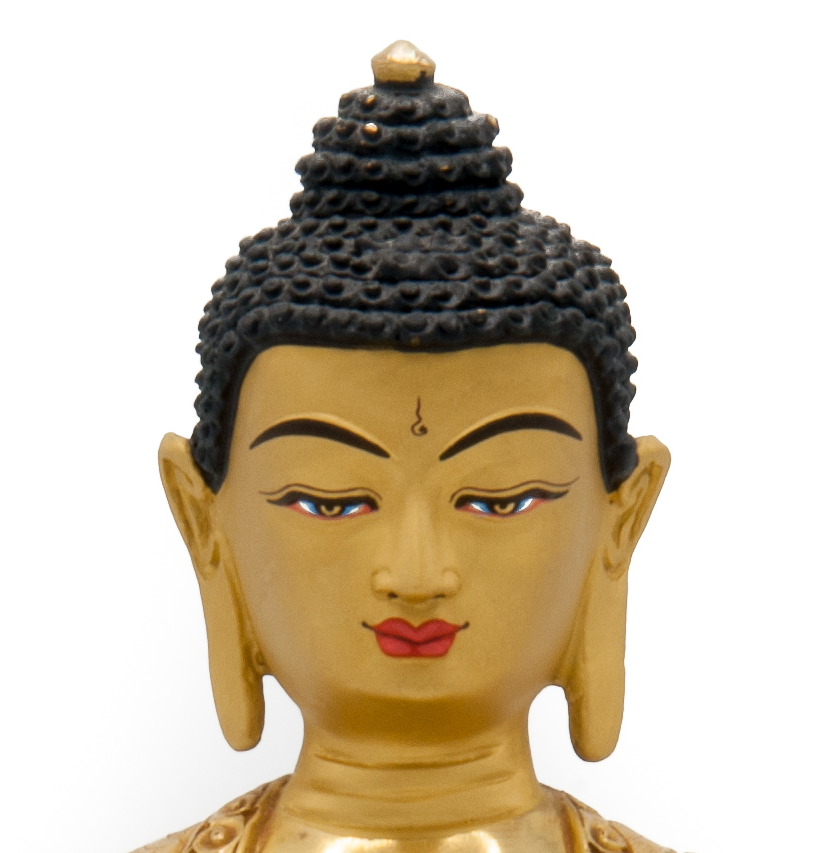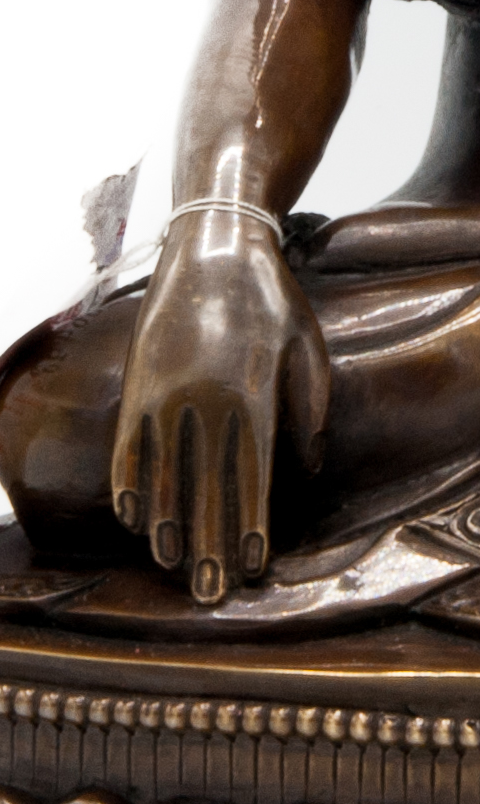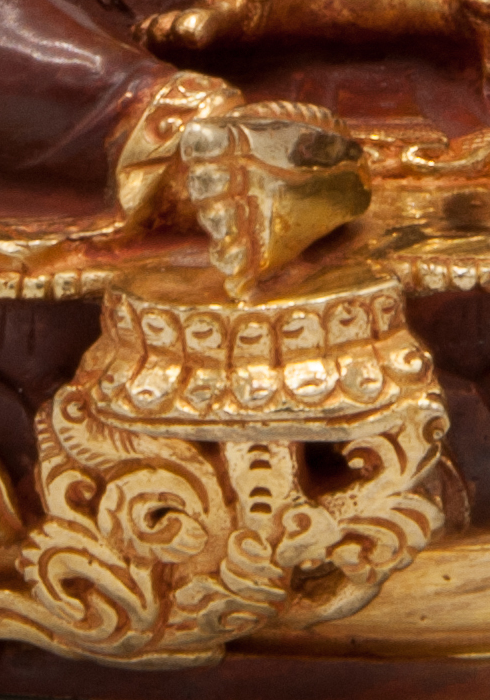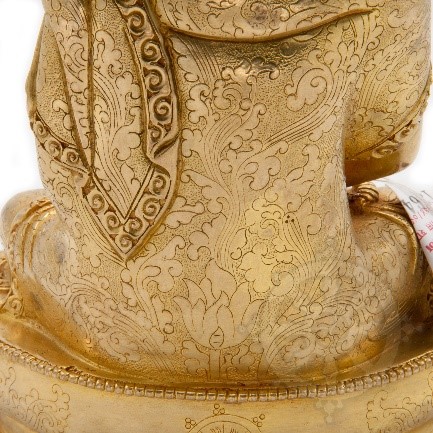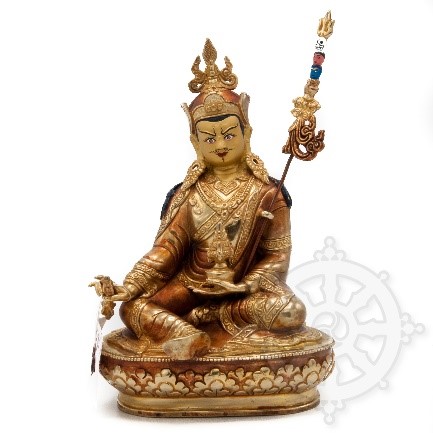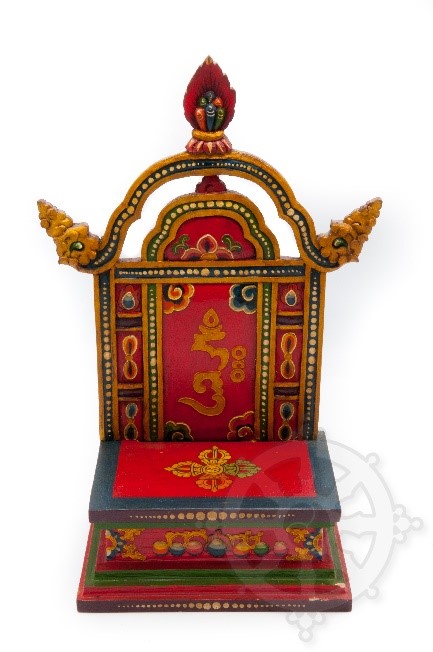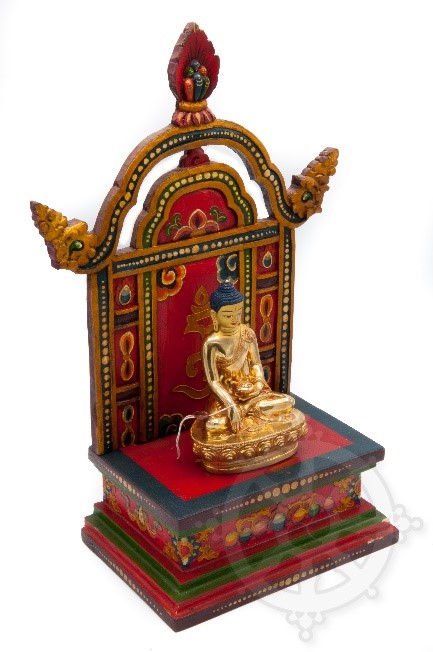Buy a Buddhist statue, Buddha statue for my practice? Tips for choosing your Buddha statue
1 Buying your Buddhist statue conscientiously
Our catalogue of Buddhist statues
Our Buddhist statues come from craftsmen who respect the Buddhist canons. These statues have been individually checked to guarantee their suitability for various Buddhist practices such as visualization exercises, altar design, etc.
BUY YOUR BUDDHIST STATUES HERE
Table of Contents
- Motivation - Why buy?
- Practice - Which deity to choose?
- The store - Where to buy?
- Quality - What to buy?
- Consecration - Blessing of the statue by filling it with specific substances.
- Material - What is the statue made of?
- Budget - How much to spend?
- Location - Where to place your Buddhist statue?
- The end of your relationship - what to do?
- Conclusions
1.2 Motivation - Why buy?
Your motivation is the best guide to help you find the Buddhist statue that suits you best.
The reasons behind the choice of a Buddhist statue are many and are related to our state of mind and emotions. The most common reason to have your own Buddhist statue is to use it as:
- An instrument of devotion: a Buddhist statue can help you to better understand and remember the qualities of divinity and to integrate them into your practice using the teachings of Buddhism.
- A support for meditation practices: through the statue and the visualization of the deity, you can practice various exercises to find inner peace.
- A blessing to your personal or professional environment: Buddhist statues can be consecrated and blessed by your lama / teacher / spiritual friend. Your daily routine as you walk past the statue will be to remind you of the qualities of the deity and/or make offerings to it (incense, flowers, saffron water, etc.).
- An appreciation of the work of art: you recognize the artistic quality of this work and thus contribute to perpetuating this artisanal tradition. You can of course use it to create a specific atmosphere in your living space.
Try to really internalize this question: what is your *REAL* motivation behind the act of buying a Buddhist statue? The answer will guide you in your search for a Buddha statue that suits you.
1.3 Practice - Which deity to choose?
If you have been practicing for a few years, you have probably already met a spiritual friend who is helping you along the way. Depending on your personality, on your daily practice, this spiritual friend can advise you on the divinity that possesses the qualities to be developed in yourself.
Here is a sample of the main deities of Buddhism:
- Shakyamuni Buddha: commonly called "the Buddha". He is a historical figure who lived in the 6th century BC. He was born in historical India under the Sakya clan and was called Siddhartha. He is the symbol of enlightenment.
- Avalokiteshvara / Chenrezi: Incarnation of the compassion of all the Buddhas.
- Vairochana: is one of the primordial Buddhas. Vairochana represents the purity of enlightenment.
- Arya Tara / Green Tara: named the Great Liberator, she embodies the protection of all beings.
Each deity has its own set of qualities.
|
Each Buddhist statue represents a deity with its own set of qualities. |
||
1.4 The Store - Where to Buy
Before you decide to buy, you should identify a store that guarantees the quality of its craftsmanship. Here is some mandatory information you need to get from a professional seller:
- Origin: The origin of the product provides an indication of the quality of the manufacturer of the statues. For example, for the canons of Tibetan Buddhism, the best craftsmen come from Nepal. From Nepal, the art of making Buddhist statues has been exported to Tibet, where it has become increasingly popular.
- Warranty: Are the duration and conditions of the warranty clearly stated?
- Description: is the description sufficiently detailed (dimensions, weight, high-resolution image, material, manufacturing process, etc.)? By being able to check these details, you have the possibility to detect inconsistencies (e.g. size vs. weight for a given type of material, etc.).
- Illustrations: Are the images of the Buddhist statue sufficiently numerous and detailed for you to verify the respect of the Buddhist canons?
- Ethical values: does the store respect certain ethical rules (fair price to the craftsman, ecological packaging and transport, carbon compensation for transport, etc.)?
- Precautions for use: does the site provide instructions for the maintenance of a statue? How to clean it? How to store the statue? How to respect Buddhist etiquette? Etc.
The quality of the information provided by the store is a good indicator of the seriousness and professionalism of the store.
1.5 Quality - What to buy?
As an instrument of practice, a Buddhist statue must evoke from the practitioner a sense of devotion or refuge towards the deity represented. To this end, the quality of the statue must be high.
In order to assess the quality of a Buddhist statue, it is important to check aspects such as facial expression, accuracy of gestures and postures, etc.
TOP
1.5.1 The face
The face is the most important factor to look for when buying a Buddhist statue.
For example, if you decide to buy a golden statue, you should check that the face is painted with a 24k gold amalgam. After this painting, a master painter (usually a thangka painter) will finely draw the eyes, nose and lips. For some deities, the facial expression should represent compassion, considering that it should invoke devotion and respect within us.
The finer and more precise the painting of the statue, the better the quality of the statue.
|
An inspiring face is a good indicator of the preciousness of your Buddhist statue! |
1.5.2 The body, gestures and postures
The deities are represented in different postures symbolizing the multiple qualities and aspects of the divinity. Here are a few examples:
- Green Tara has her right foot on a small lotus that symbolizes her readiness to help those in need.
- Shakyamuni Buddha's hand gesture touching the earth symbolizes his willingness to use the earth as a testimony to his enlightenment.
|
The gestures and postures of the Buddha statue must be correct! |
|
Buddhas and deities are represented making gestures (mudras) with their hands and their legs are in certain postures.
When you buy a Buddhist statue, you must check the exact respect of the canons of your Buddhist tradition.
1.5.3 Attributes
The deities possess various attributes symbolising their multiple qualities. For example, for example..:
- Clothes: the deities sometimes wear the traditional monk's robe or more elaborate clothes, such as a shawl, a silk skirt, a tunic with gold patterns, etc. The deities may also wear a traditional monk's robe or more elaborate clothes, such as a shawl, a silk skirt, a tunic with gold patterns, etc. The deities may also wear the traditional monk's robe. Clothes often represent total liberation from the torments caused by internal disturbances;
- Jewellery: ear, necklace, wrist, belt, etc. represent the fact that sensory pleasures are not suppressed but transformed into ornaments of wisdom.
Be careful, the attributes may vary from text to text, from practice to practice.
1.5.4 Engravings
The engravings on the body of the Buddhist statue are another essential aspect of the craftsman's mastery and the quality of the statue. The more numerous, fine and detailed the engravings, the greater the certainty that this Buddhist statue was made by a master craftsman. For example, for statues of Tibetan Buddhism, the best masters of craftsmanship are located in Patan, Nepal.
|
These splendid details are a sign of very, very high quality! |
1.6 Consecration - Blessing of the statue by filling it with specific substances
It is not necessary to consecrate a Buddhist statue, but if you do, consider that the statue must be hollow in order to be filled and sealed.
For example, in the context of Tibetan Buddhism, a statue is filled according to a specific ritual with a long-life stick, mantras, sacred pills, precious materials such as saffron, symbolic engravings, etc. The statue is then filled with a long-lasting stick, mantras, sacred pills, etc., and the body is then filled with a special ritual. At the end of the filling, the Buddhist statue is sealed and blessed by a lama. The consecrated statue then becomes the embodiment of the qualities of the deity and blesses the practice of its owner.
Usually, Buddhist statues made in Nepal are specially designed for consecration. At the time of purchase, you should even be able to ask the seller to have the statue blessed by a monk or lama in a Buddhist monastery.
1.7 Material - What is the statue made of?
The material of the statue does not, at first sight, matter so much. It is more a question of your personal taste and the budget you wish to invest.
You can find very good Buddhist statues for practice in different materials: gold plated (total / partial), oxidized copper, wood, semi-precious stone, resin, bronze, etc..
|
Quality Buddhist statues can be made of different materials. |
||
1.8 The Budget - How much to spend?
It is not necessary to spend a fortune on a Buddha statue for your daily practices.
Well-designed Buddhist resin statues that match the Buddhist canons start from a budget of about 40 € for a statue of +-15 cm.
Of course, there is no upper limit! You will find gold-plated statues made by the greatest masters at more than a thousand euros for a 15 cm statue and even tens of thousands of euros for a marble statue a few meters high for a temple.
Our advice is this: start spending a small budget on your first Buddhist statue, then as you practice and develop an affinity with the deity, you can invest a larger budget in a beautifully crafted statue.
TOP
1.9 Location - Where to place your Buddhist statue?
1.9.1 On an Altar
Buddhist statues are not decorative objects. The acquisition of a statue implies that one wishes to 1) use it for one's personal practice and 2) devote an altar or a privileged place to it. It is not desirable to use a statue as a bookweight or for any purpose other than practice.
1.9.2 In an apartment
It is advisable that your Buddhist statue be placed in an elevated, clean place and be separated from more "mundane" products. Other objects should not be placed above Dharma statues.
Feng Shui is another valuable method to know where to place your Buddhist statue.
1.9.3 In a garden
The Buddhist statue will always have to face your house to transmit a positive influence. You should also avoid placing a Buddhist statue on the floor. This is considered disrespectful. A solid piece of rock or marble is preferable to place your Buddhist statue on it.
1.10 The end of your relationship - What to do?
If you don't want to keep your Buddha statue, don't throw it away!
Contact the nearest Buddhist center and make a donation. By doing so, the statue will bring you merit until the end of your relationship.
1.11 Conclusions
A Buddhist statue can bring many benefits, but you must first find the one that suits you!
Remember: on the Internet, you can find many types of Buddhist statues (deities, quality, price, etc.).
Do not hesitate to also ask the seller to have the Buddhist statue blessed by a monk from the nearest Buddhist centre.
TOP
2. Other information on Buddhist statues
2.1 The world's largest Buddhist statues
|
1 |
Spring Temple Buddha |
Buddha Statue - Vairocana |
China |
128 m (420 ft) |
|
2 |
Laykyun Sekkya |
Statue of Buddha - Gautama |
Myanmar |
115.8 m (380 ft) |
|
3 |
Ushiku Daibutsu |
Buddha Statue - Amitabha |
Japan |
100 m (330 ft) |
|
4 |
Sendai Daikannon |
Kannon / Guanyin / Tchenrézi |
Japan |
100 m (330 ft) |
|
5 |
Qianshou Qianyan Guanyin from Weishan |
Kannon / Guanyin / Tchenrézi |
China |
99 m (325 ft) |
|
6 |
Great Buddha of Thailand |
Statue of Buddha - Gautama |
Thailand |
92 m (302 ft) |
|
7 |
Dai Kannon of Kita no Miyako park |
Kannon / Guanyin / Tchenrézi |
Japan |
88 m (289 ft) |
|
8 |
Awaji Kannon |
Kannon / Guanyin / Tchenrézi |
Japan |
80 m (260 ft) |
|
9 |
Great Buddha of Ling Shan |
Buddha Statue - Amitabha |
China |
79 m (259 ft) |
|
10 |
Guanyin of Nanshan |
Kannon / Guanyin / Tchenrézi |
China |
78m (256 ft) |
2.2 Deities often represented by Buddhist statues
Here is a non-exhaustive list of these statues:
- Buddhist Statue of Amitabha Buddha: Amitabha Buddha is often represented as the Emanation Body. He performs the mudra of meditation, the Dhyana Mudra, and holds a bowl of alms filled with the nectar of wisdom in his hands, symbolizing his kindness in giving vast and profound instructions to beings. The alms bowl represents wisdom and non-attachment. It refers to the fact that the monks go every morning to beg for their food from the laity in exchange for prayers, the bowl is also one of the few traditional objects they possess along with the monastic vestments.
It is covered with the three pieces of religious clothing: a shirt and trousers as underwear, and a cloth (Zen) as clothing which correspond respectively to the 3 trainings: discipline (skt. Vinaya), meditative concentration (skt. Shamata) and transcendental knowledge (skt. Vipassana.). It bears the major marks and minor signs of a fully awakened manifestation of Nirmanakaya. The perfection of the Buddha's state is expressed in the characteristics of his body, to which 32 major marks and 80 minor signs are traditionally attributed. - Buddhist statue of Buddha Amitayus: Amithayus (Amithaba in his adorned form) reigns over the "Pure Western Land of Bliss", a wonderful world, pure, perfect, devoid of evil and suffering. Amithayus is represented as Shakyamuni Buddha, but with the gestures (mudrā) of meditation or transmission of the law.
- Buddhist statue of Shakyamuni Buddha: The Buddha is often depicted in a seated position, with his right hand resting on his right leg and his fingers pointing towards the ground. This is the "Mudra Bhumisparsha" which means "touching the ground" or "taking the earth as a witness". The left hand rests on the knee with the palm facing upwards. This Buddhist statue represents an important event in the Buddha's life when he attained enlightenment below the Bodhi Tree. After the Buddha overcame the many trials of the demon Mara and attained Enlightenment, the demon challenged him for lack of a witness. The Buddha then extended his right hand towards the earth. The earth began to tremble, testifying to the Buddha's Ultimate Realization, and the demon king disappeared.
The perfection of the Buddha's state is expressed in the characteristics of his body, to which 32 major marks and 80 minor signs are traditionally attributed. - Buddhist statue of the Medicine Buddha, Sangye Menla:On his left hand is a bowl filled with medicinal substances. According to certain texts, the bowl, carved out of a block of beryl, has twelve sides recalling the twelve great wishes made by Sangye Menla for the good of all beings. He is regarded as the Medicine Buddha because his compassion extends to all suffering of beings. In his right hand, the Buddha holds a stem of arura (Terminalia chebula, of the genus myrobolans), a plant considered to be the queen of medicinal plants. Indeed, each of its parts is attributed powerful and specific healing virtues.
- Buddhist statue of the Boddisatva Chenrezig, Avalokiteshvara:Chenrezig, "he who looks with clear eyes" is the Tibetan incarnation of Avalokitesvara, the Bodhisattva of compassion and is considered the protector of Tibet. Chenrezig, or four-armed Avalokitesvara, is the most popular form of the deity and its symbolism, as described by Bokar Rinpoche, is as follows:
- the white colour of his body: he is totally pure, free of any veil;
- a single face: the essence of all phenomena has a single flavor;
- the 4 arms: the 4 unlimited feelings (love, compassion, joy, equanimity);
- the two legs crossed in the vajra posture: it does not remain in the extremes of nirvana for oneself and samsara; it unites compassion and emptiness;
- the jewel held in joined hands: it fulfills the good of all beings;
- the rosary in the right hand: it draws all beings towards liberation;
- the lotus in his left hand: he possesses the knowledge on which compassion for all beings is based; moreover, just as a lotus grows from the mud without its flower being in any way tainted, Avalokita works in the world without being tainted by its imperfections;
- the doe skin on his shoulder: the legendary kindness of the doe symbolizes the thought turned towards the good of the beings;
- the different jewels: the richness of the qualities of his awakened mind;
- the silks of five colours: the five wisdoms.
- Green Tara Buddhist Boddisatva Statue: Green Tara is one of the 21 forms of Tara. Its green colour indicates that Tara acts quickly for the good of those who pray to her. The Buddhist statues represent her according to the following symbolism:
- The symbolism of the posture represented in this statue of Green Tara is the following:
- the left leg, bent, indicates that it is no longer subject to internal disturbances;
- the right leg, already half extended, indicates that she is ready to get up to go and help the beings; thus Tara, while being totally free from the imperfections of samsara, remains there to help all those who suffer: she relieves them of their temporal difficulties and, on the spiritual level, guides them towards liberation, the end of all suffering;
- With her right hand, she grinds the gift, signifying that she bestows ordinary accomplishments and sublime achievement;
- the left hand performs the mudra of the refuge: its thumb and ring finger touch to symbolize the union of skillful means and knowledge; its three other fingers are raised and represent the Three Jewels: the Buddha, the Dharma and the Sangha;
- the lotus whose stems she holds in her hands indicate that all the qualities of realization have fully blossomed in her.
- Buddhist Statue of Guru Rinpoche, Padmasambava: Guru Rinpoche also called Padmasambhava is often represented in Buddhist statues as follows:
- The symbolism of his body as represented in this statue is explained as follows: one face: absolute truth is one; eyes wide open: he always remains in absolute nature; two legs: identity of samsara and nirvana; seated in the posture of "royal ease": the whole manifestation obeys him.
- The meaning of the headdress is as follows: its general shape is that of a five-petalled lotus, meaning that Padmasambhava belongs to the lotus family; the three vulture feathers planted at the top symbolize the dzokchen, the summit of teaching and realization in the Nyingmapa tradition; and on the front of the headdress a sun and a moon, symbols of the two bodhichitta, ultimate and relative.
- He wears three types of clothing: the monastic garments represent the small vehicle, his blue garment the large vehicle, his brocade cape the diamond vehicle.
- In his right hand, he holds a vajra (symbol of the transformation of poisons into wisdom) at the same time as he makes the moudra of the threat, showing that he subdues the negative forces.
- With his left hand, in the mudra of meditation, Padmasambhava carries a cranial cup containing a long-life vase filled with the nectar of immortality, testifying to his attainment of the state beyond death.
- The khatvanga, a sort of trident that he holds on his left side, symbolizes his parèdre, Mandarava.
- Buddhist statue of Boddisatva Maitreya: Maitreya (Sanskrit word meaning "friendly", "benevolent"). He is the next Buddha to come when the Dharma, the teaching of Shakyamuni Buddha, has passed away.
2.3 Buddhist art and statues
Buddhist art is any artistic practice influenced by Buddhism. It includes any artistic medium representing Buddhas, Bodhisattvas and other entities; mandalas and other visual aids to the practice; as well as physical objects associated with Buddhist practice, such as vajras, bells, stupas, Buddhist statues and temple architecture. Buddhist art originated on the Indian subcontinent after the historical life of Siddhartha Gautama, from the 6th to 5th century BCE, and then evolved through contact with other cultures as Buddhism spread throughout Asia and the world.
Buddhist art followed the believers as the Dharma spread, adapted and evolved in each new host country.
From the 2nd to the 1st century BCE, Buddhist sculptures became more explicit, depicting episodes from the Buddha's life and teachings. They took the form of votive tablets or friezes, generally related to the decoration of stupas. The first Buddhist works of art in India date back to the 1st century BC.
2.4 How Buddhist statues are made
Very often the lost wax technique is used to make a Buddhist statue.
The technique known as "lost wax" is the process by which a metal sculpture or statue (often in silver, gold, brass or bronze) is cast from an original sculpture. Extremely complex work can be done using this method. The oldest artefact resulting from this technique is a 6000 year old amulet from the Indus Valley civilization. From 1200 BC to 500 AD, heaps of copper and bronze tools made by the lost wax process are known from Uttar Pradesh, Bihar, Madhya Pradesh, Odisha, Andhra Pradesh and West Bengal. Bronze icons were produced during the 3rd and 4th centuries, such as the Buddha statue of Amaravati and images of Rama and Kartikeya in the Guntur district of Andhra Pradesh. From 300 to 550 CE, bronze figures were recovered from various neighbouring countries such as Pakistan, Bangladesh and India. The production of images by the lost-wax process reached its peak from 750 to 1100, and continued to spread in South India between 1500 and 1850. The technique is still used throughout India, as well as in neighbouring countries such as Nepal, Tibet, Ceylon, Burma and Siam.
Castings can be made from the wax model itself, the direct method, or from a wax copy of a model that does not need to be wax. This is called the indirect method.
2.5 Advice on respecting Buddhist statues
Buddha statues are now so popular that they are found all over the globe: in restaurants, in offices, in gardens, on calendars, and so on. However, we must never forget the main message conveyed by these representations: the Buddha's teaching on compassion, love, generosity and understanding.
A form of respect should therefore be shown towards the Buddha statues as with any religious representation. We remind you here of a few ethical rules:
- The image of Buddha is not supposed to be used in any way and on any object: T-shirts, trousers, plates, slippers, etc.
- Statues of Buddha and other deities are objects of practice that have the power to protect against lower rebirth and to show the way to Liberation. They should therefore be treated with respect, i.e. kept off the ground and away from places where people sit or walk.
- Statues should be covered or protected for transport, including covering the head with a clean cloth. Never handle a statue of a deity by its head but by its base.
- The statues should be placed in an elevated, clean place, separated from more "mundane" materials. Other objects should not be placed above the Dharma statues.
- Buddha statues are not decorative objects. Acquiring a statue implies that one wishes to use it for one's practice and dedicate to it an altar or a sacred or privileged place for one's practice. It is not desirable to use a statue as a bookweight or for any other purpose.
- If you have to sit in a temple or in front of a statue, always remember to put your feet back. They should never point in the direction of a representation/statue of Buddha or a teacher. Since feet are considered in some parts of Asia as an impure part of the human body, pointing at feet can be considered disrespectful.
- If you no longer wish to keep your Buddhist statue, don't throw it away! Please contact the nearest Buddhist center and make a donation. By doing so, you will benefit from its merits until the end of your relationship.
- Finally, if in a Buddhist region of the world, you come across large statues, respect them! They are not promontories for selfies, you keep a sufficient distance and of course, you don't climb them!
These are some non-exhaustive rules of Buddhist ethics that you are free to follow or not.
2.6 Filling and Blessing
It is important to bless and consecrate a Buddhist statue in order to give it a soul and for the energy of the deity to take place in the statue.
The statue of Buddha, once consecrated, becomes a living entity and allows its blessings to be bestowed on the one who possesses it. It therefore becomes sacred and must always be respected as an incarnated deity. The consecration of a statue is most often done in a Buddhist monastery by a lama(*).
Consecration is a Buddhist blessing ritual during which the statue is first purified. Then the object is filled with sacred Himalayan herbs, medicinal plants, incense, mantra, mandala, gemstones, relics, amulets and other small sacred objects . Then a blessing / puja ceremony is held towards the deity so that the Buddha invests all his power and benefits in the statue.
In monasteries, the consecration ends with the ceremony of opening the eyes of the Buddha. It is a matter of opening the eyes and thus giving a soul to the statue by painting the eyes, sometimes accompanied by the hair.
(*)The-Dharma-Store.com does not and will never sell ANY consecrated ritual objects.
The-Dharma-Store.com does not consecrate statues and our advice is that you should contact a Lama in your community to consecrate your statue according to the rituals of your school.
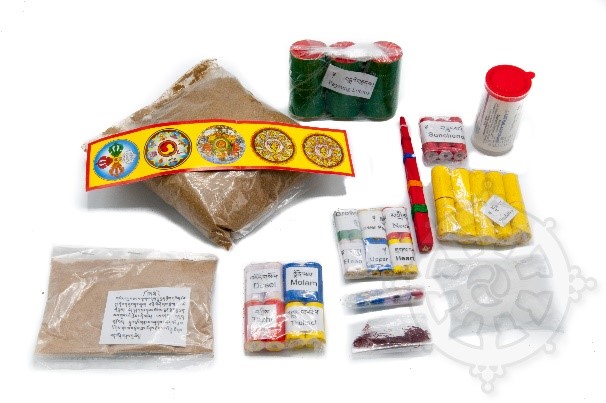 Nevertheless, if the consecration of the statue is not possible for you, you should know that we also sell kits that are used to fill the statues according to the size of the statue and the deity represented. These kits have been made in the best conditions and the respect of the rituals. We are nevertheless connected with several Buddhist centers and if it is your wish we can ask for the consecration of your statue before sending it to you. In this case, you have the choice to purchase the kit at The-Dharma-Store.com and before making the request for consecration with the Lama, we suggest you make a "suggested" donation which will be entirely returned to the Dharma center concerned. The consecration of the statue depends on the presence and availability of the Lama and may take 2 to 3 weeks. We will of course keep you informed throughout the consecration process.
Nevertheless, if the consecration of the statue is not possible for you, you should know that we also sell kits that are used to fill the statues according to the size of the statue and the deity represented. These kits have been made in the best conditions and the respect of the rituals. We are nevertheless connected with several Buddhist centers and if it is your wish we can ask for the consecration of your statue before sending it to you. In this case, you have the choice to purchase the kit at The-Dharma-Store.com and before making the request for consecration with the Lama, we suggest you make a "suggested" donation which will be entirely returned to the Dharma center concerned. The consecration of the statue depends on the presence and availability of the Lama and may take 2 to 3 weeks. We will of course keep you informed throughout the consecration process.
Resin statues that are not hollow, cannot be filled but can be blessed.

